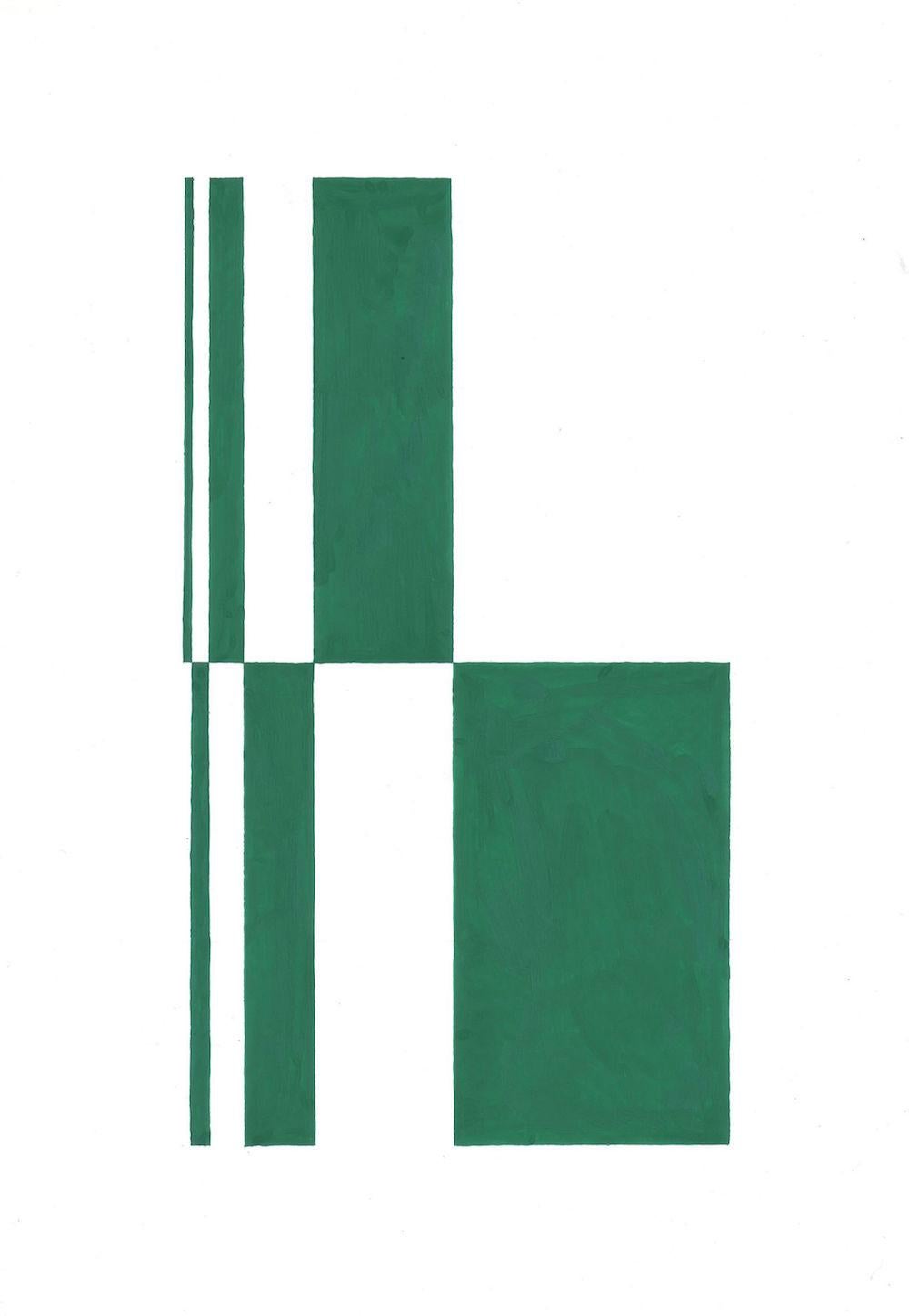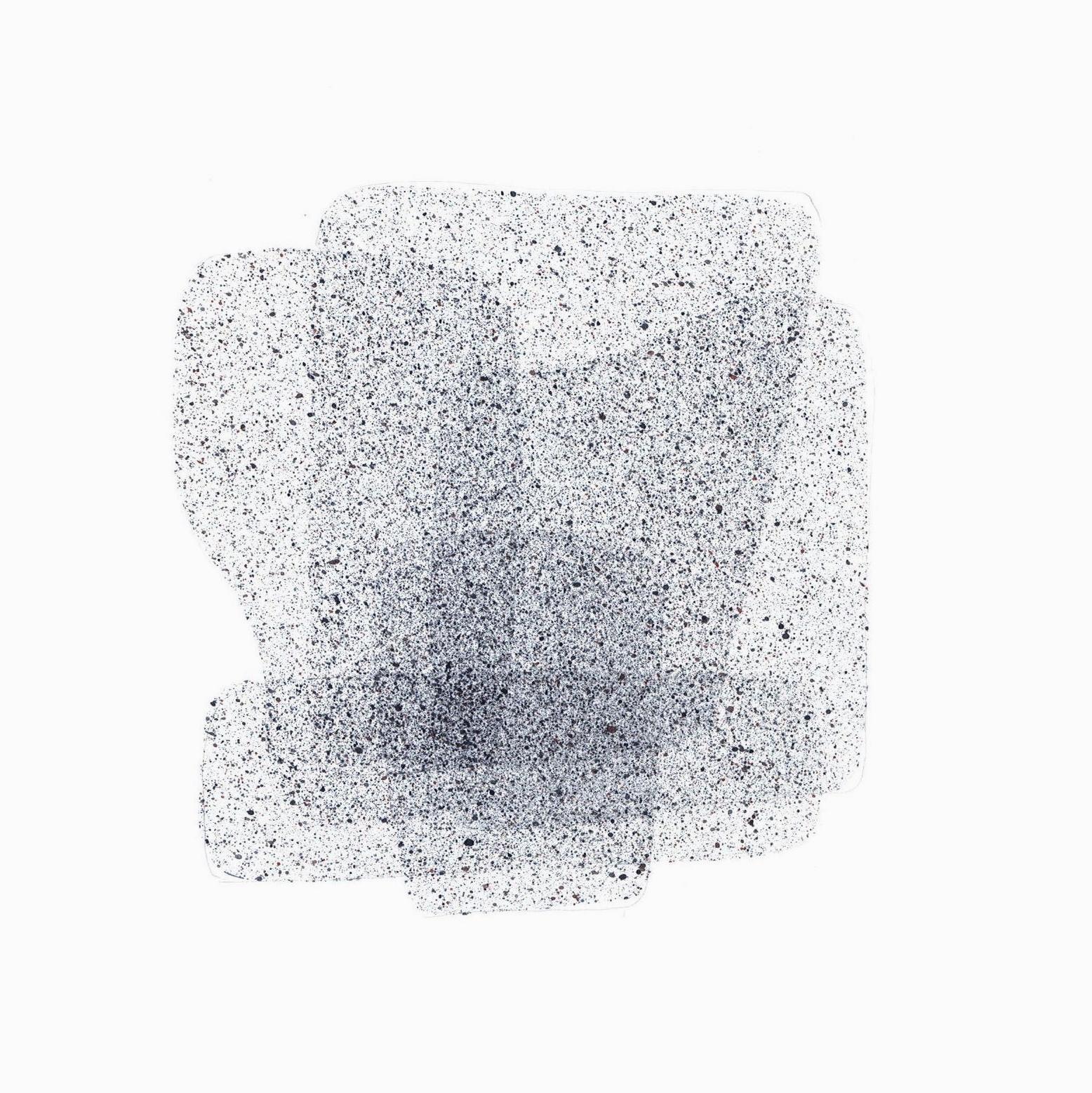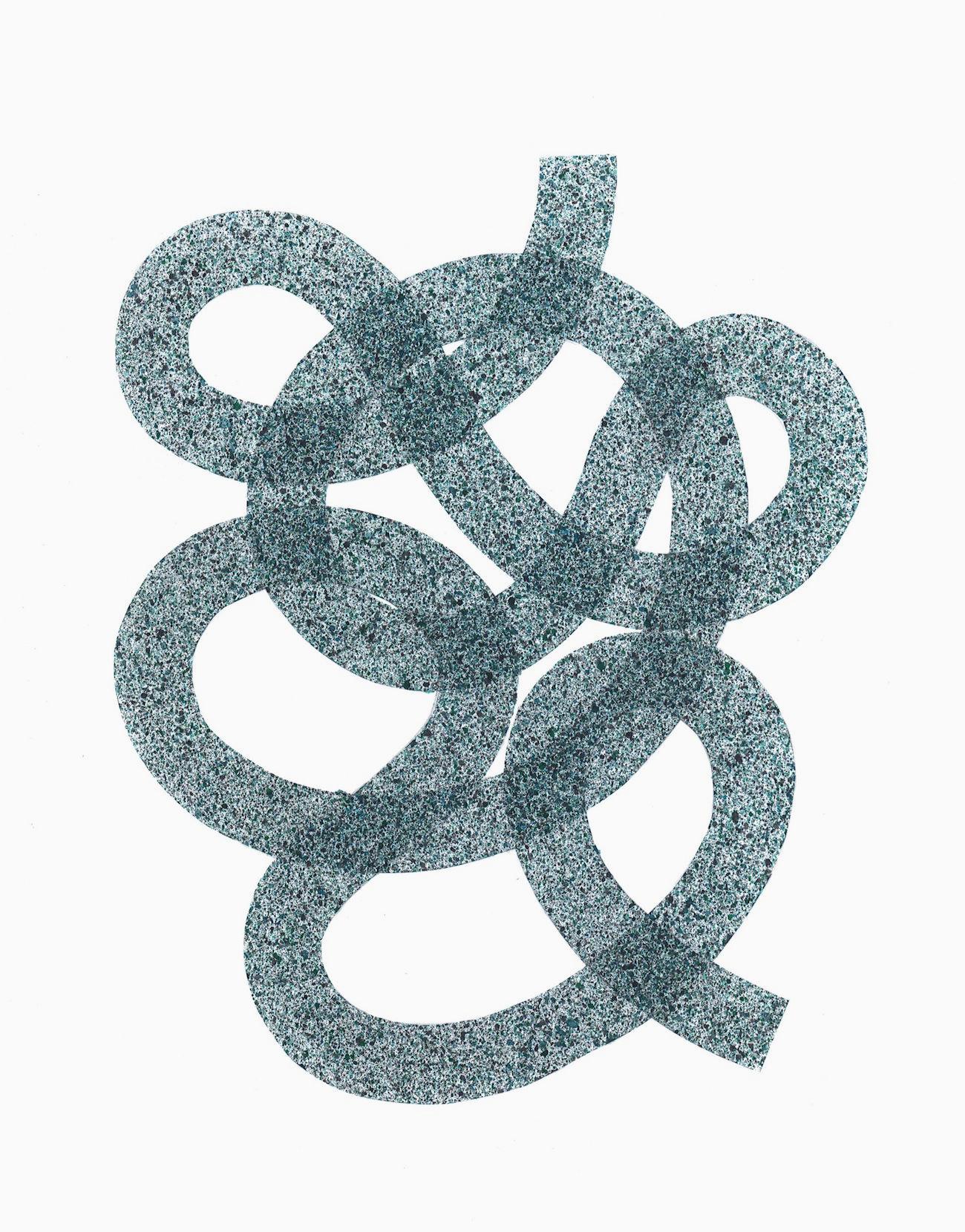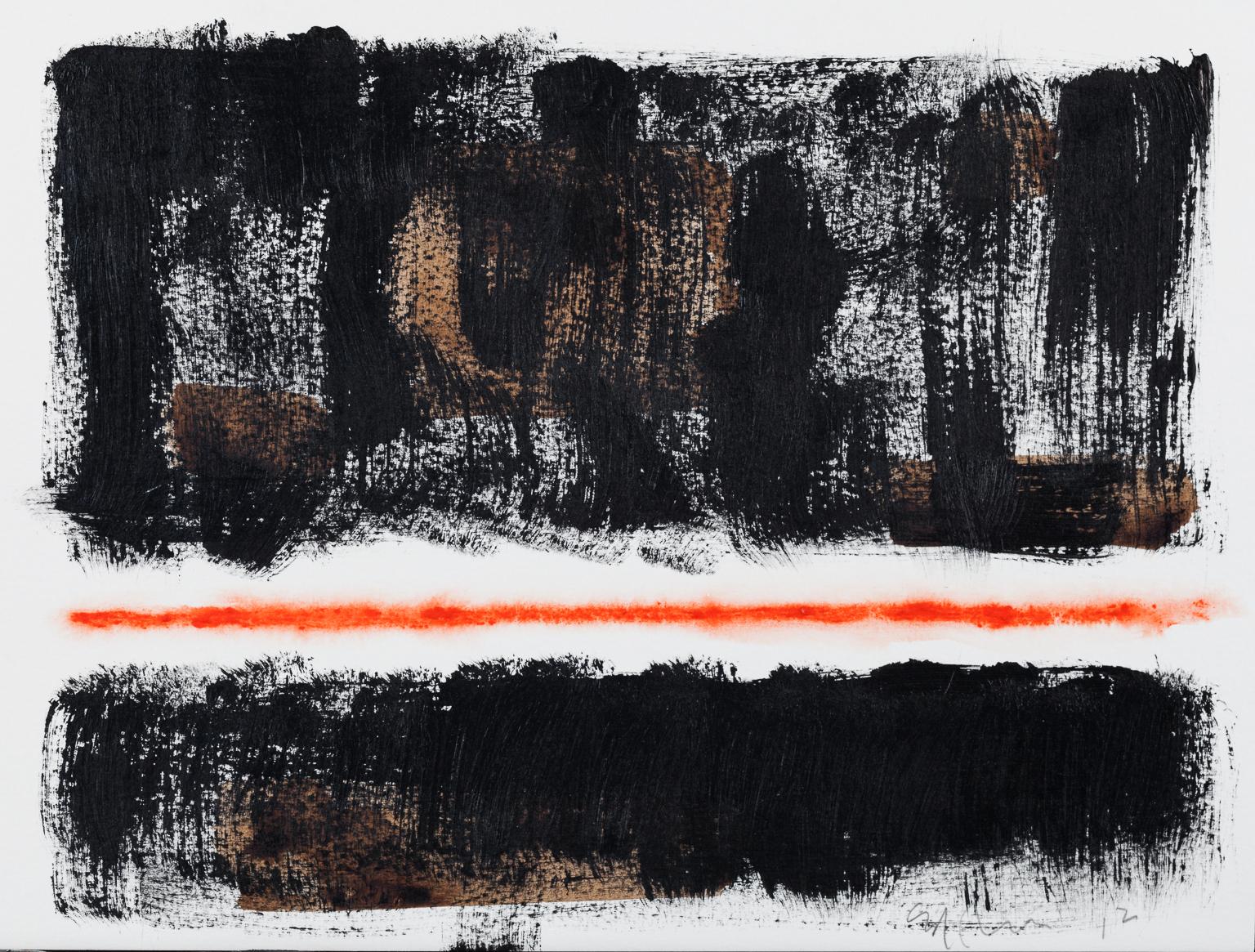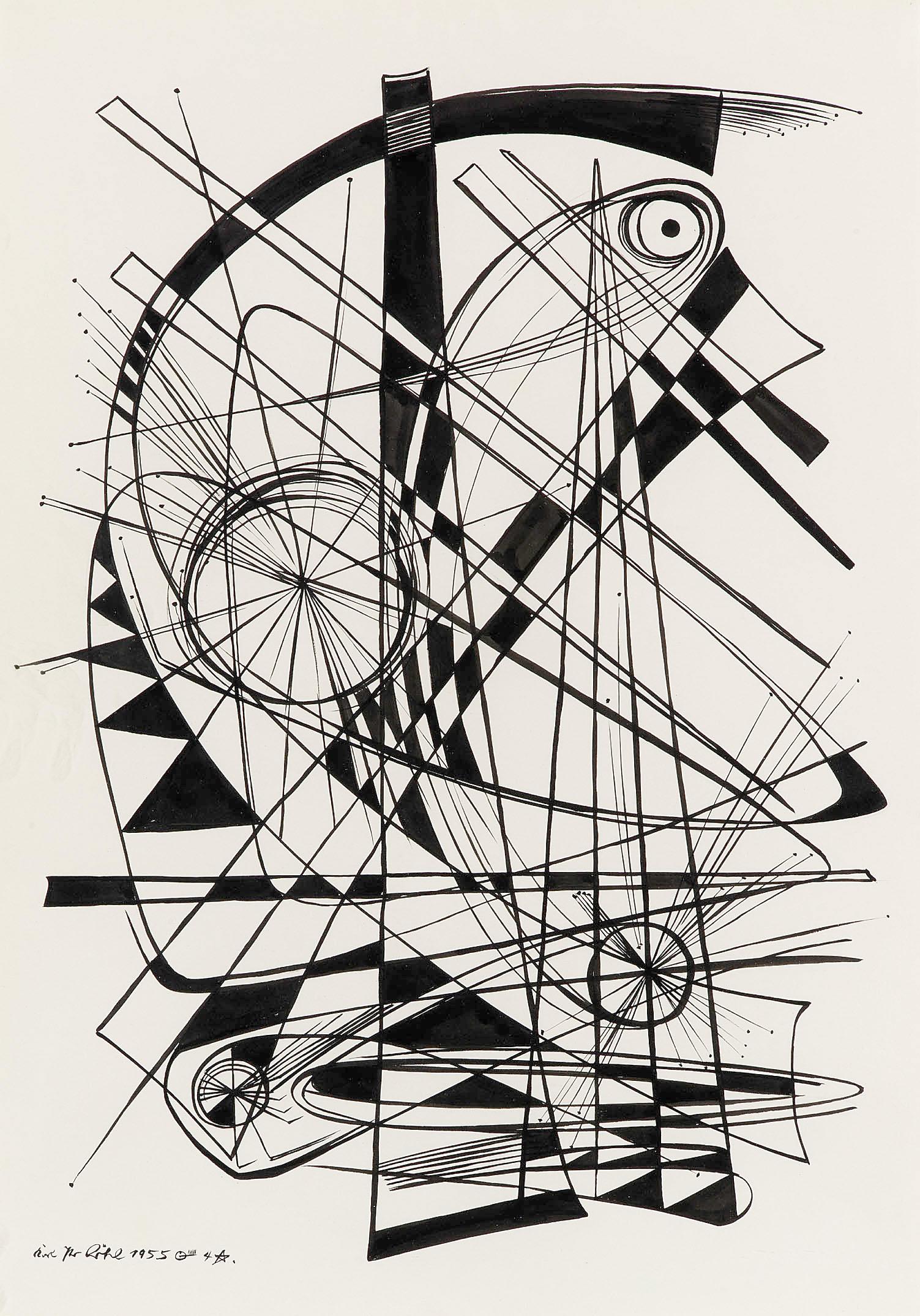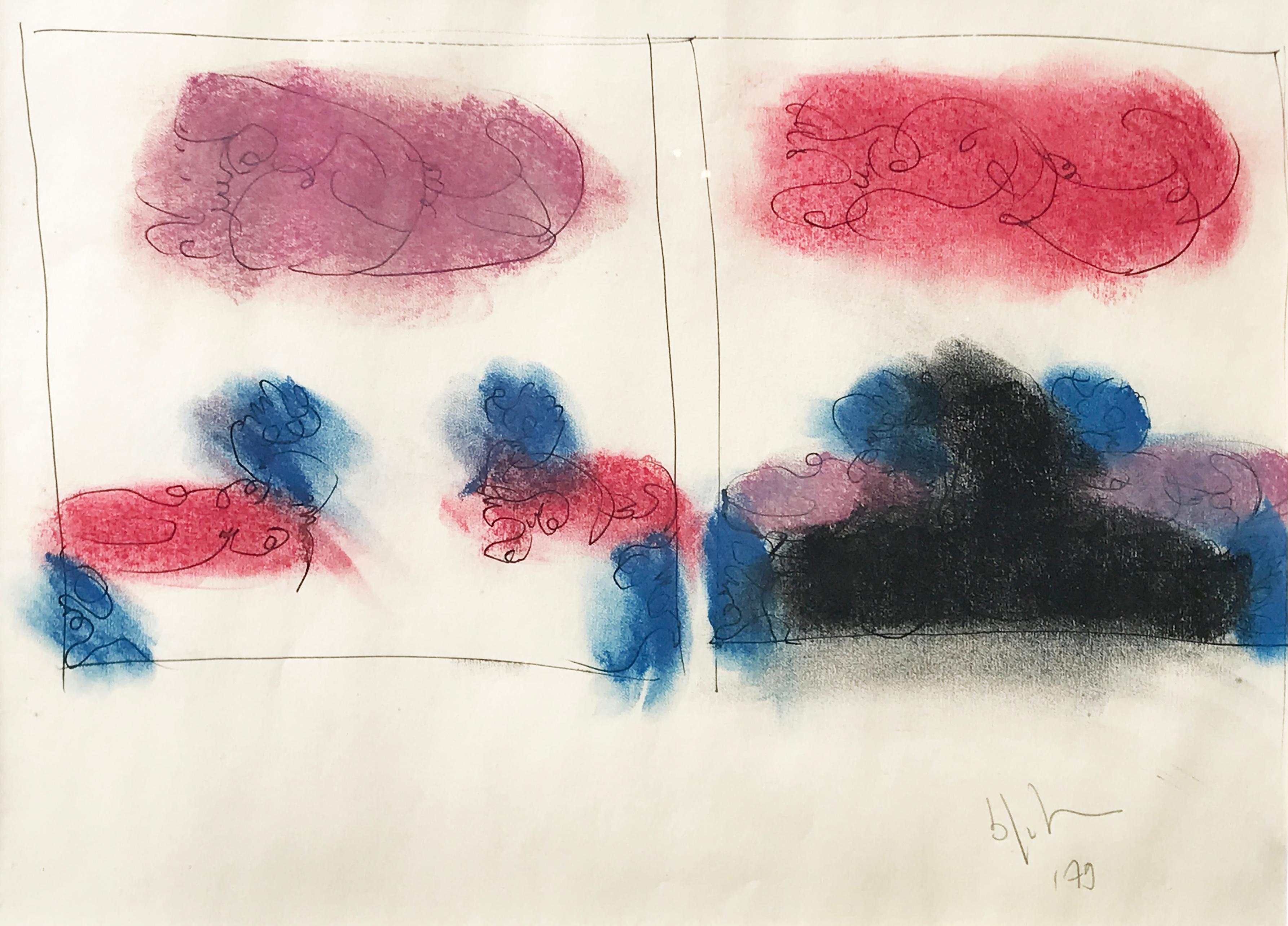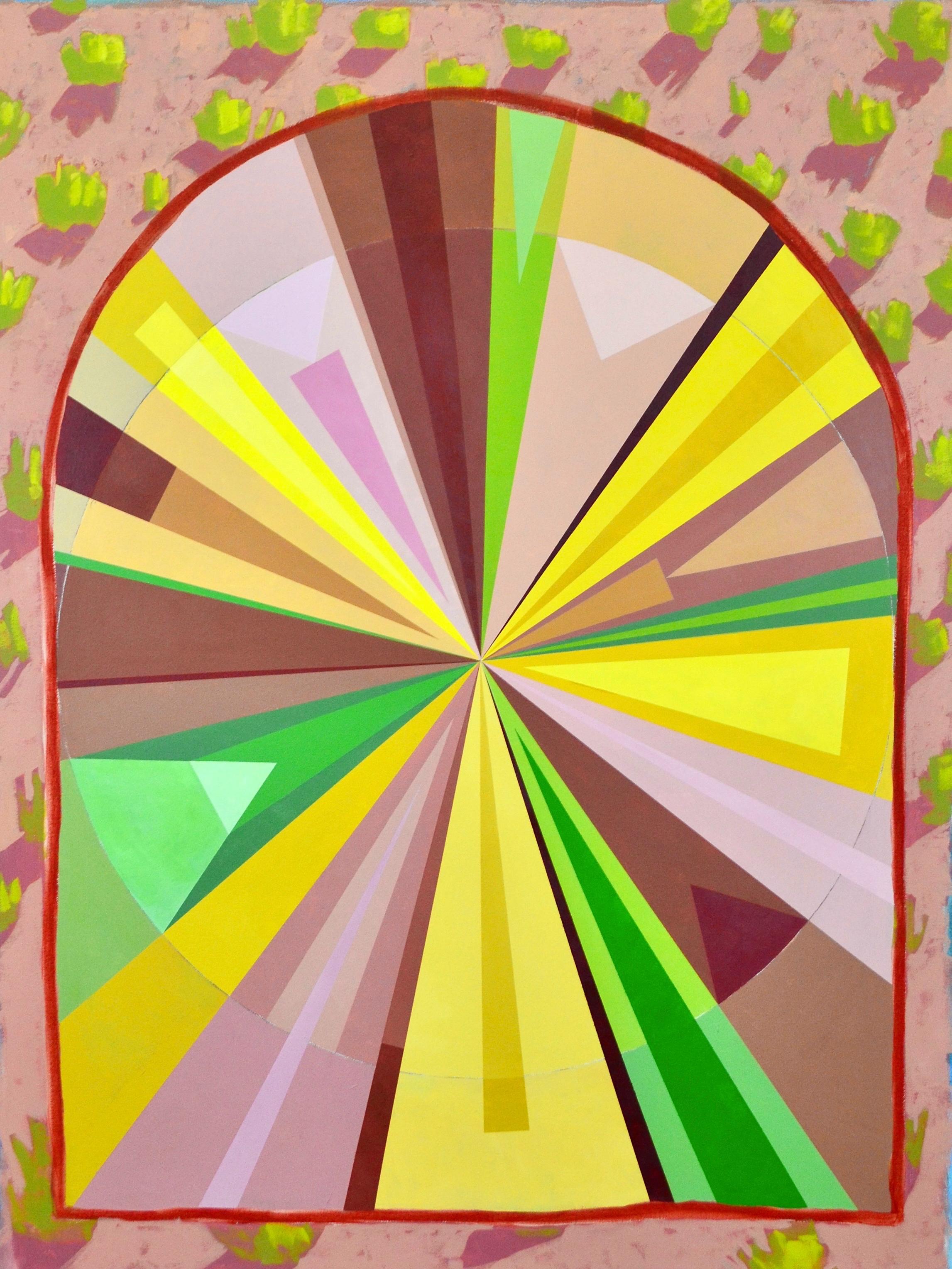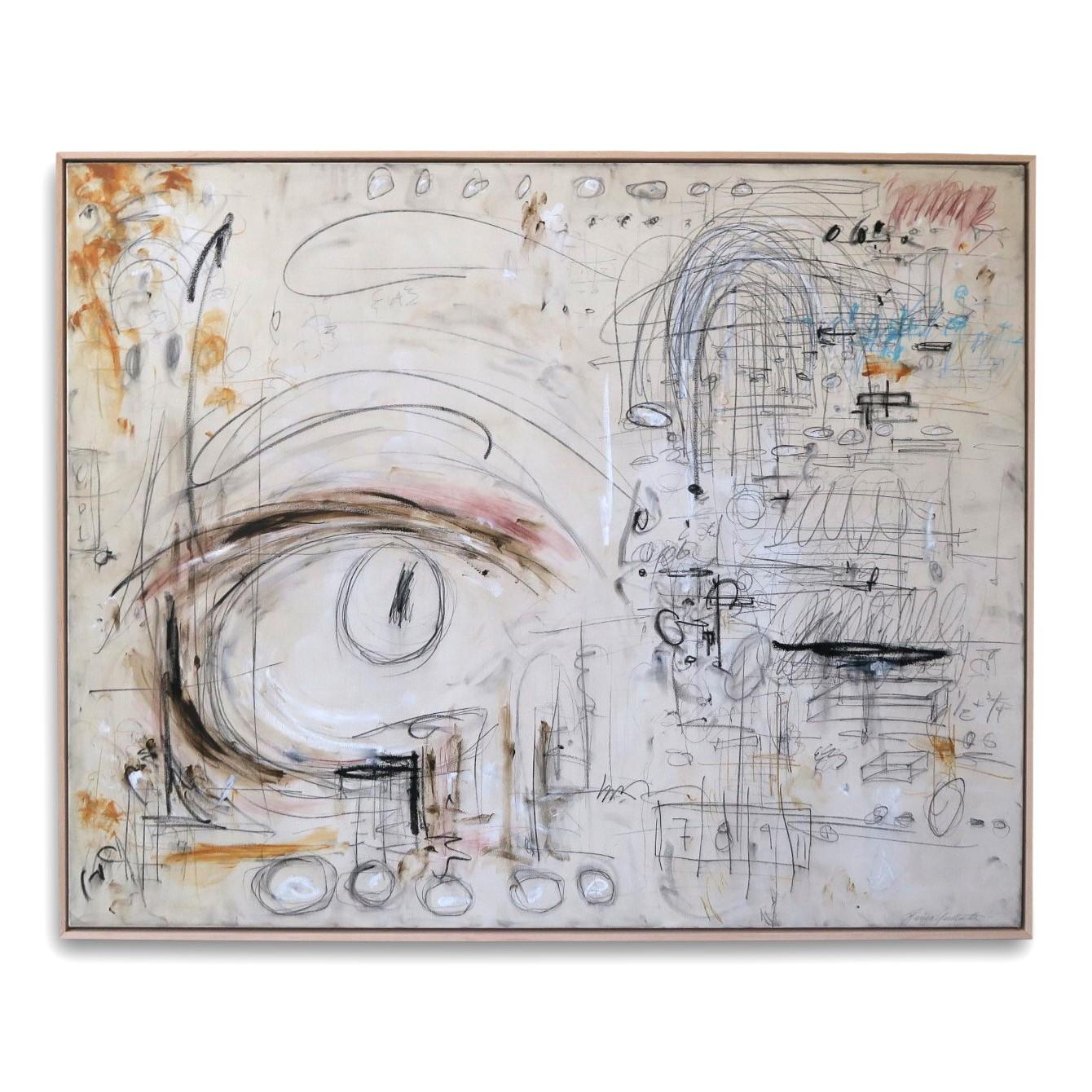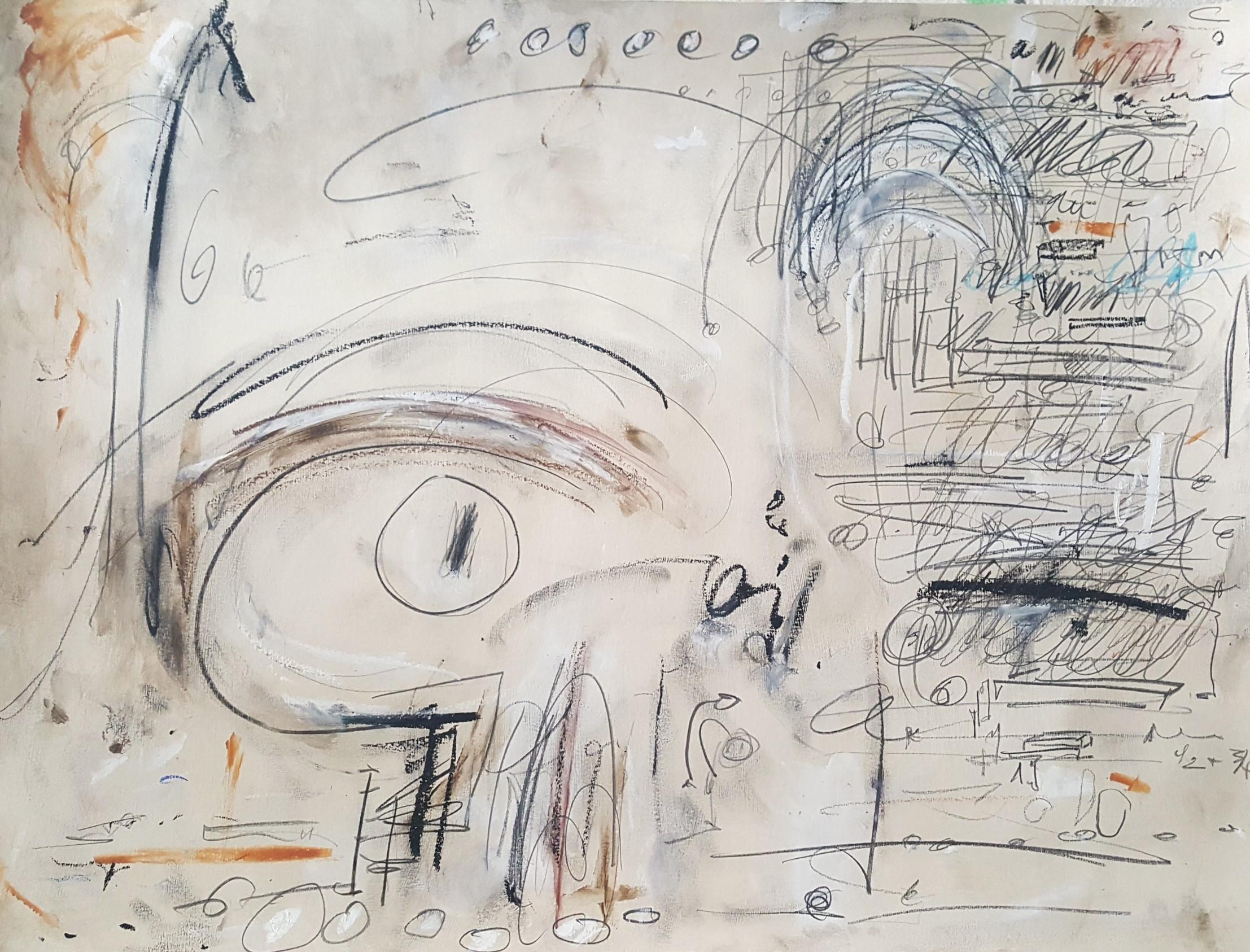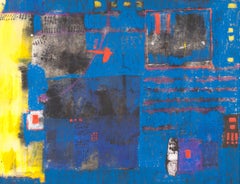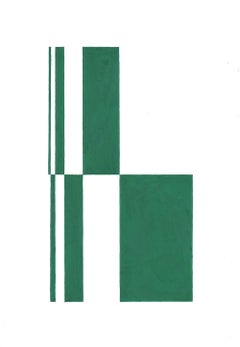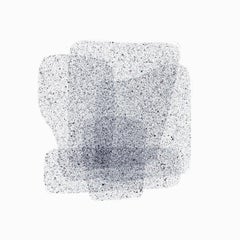
untitled
View Similar Items
Want more images or videos?
Request additional images or videos from the seller
1 of 5
Toko Shinodauntitled1987
1987
About the Item
- Creator:Toko Shinoda (1913, Japanese)
- Creation Year:1987
- Dimensions:Height: 22.375 in (56.84 cm)Width: 32.625 in (82.87 cm)
- Period:
- Condition:Original.
- Gallery Location:Fairlawn, OH
- Reference Number:Seller: TFP0571stDibs: G13030714044
About the Seller
5.0
Recognized Seller
These prestigious sellers are industry leaders and represent the highest echelon for item quality and design.
Platinum Seller
These expertly vetted sellers are 1stDibs' most experienced sellers and are rated highest by our customers.
Established in 1978
1stDibs seller since 2013
711 sales on 1stDibs
Typical response time: 1 hour
Associations
International Fine Print Dealers Association
More From This SellerView All
- SignsBy Virginia DehnLocated in Fairlawn, OHInk and pastel on paper Signed by the artist in ink lower left; titled in pencil verso From the Estate of the artistCategory
Mid-20th Century Abstract Abstract Drawings and Watercolors
MaterialsPastel
- UntitledBy Shoichi IdaLocated in Fairlawn, OHUntitled molded mud-dried paper with collage elements, 1996 Signed and dated lower edge (see photo) Annotated and titled verso Sheet size: 24 x 7 inches Provenance: Ralph Drake, fir...Category
1990s Abstract Abstract Drawings and Watercolors
MaterialsMixed Media
- Untitled (Inspired by a Chinese scroll painting)By Peter MarksLocated in Fairlawn, OHUntitled (Inspired by a Chinese scroll painting) Collage with ink on 6 paper elements Unsigned Provenance: Estate of the Artist Condition: Excellent Image size: 4 x 12 inches Support...Category
Early 2000s Abstract Abstract Drawings and Watercolors
MaterialsInk
- UntitledBy Peter MarksLocated in Fairlawn, OHUntitled (Circles) Graphite on wove paper, 2007 Unsigned Provenance: Estate of the Artist Condition: Excellent Sheet/Image size: 16 15/16 x 14 inches Peter Marks (1935 -2010) Pete...Category
Early 2000s Abstract Abstract Drawings and Watercolors
MaterialsGraphite
- Untitled (Abstraction)By Rolph ScarlettLocated in Fairlawn, OHUntitled (Abstraction) Ink on textured paper, c. 1958 Signed lower right "Scarlett" (see photo) Condition: Excellent Archival framing with OP3 Acrylic Sheet size: 21 3/4 x 30 inches Frame size: 28 1/2 x 36 1/2 inches Note: A rare mid to late 1950s example of the artist's abstract expressionist style. Provenance: estate of the artist Private Collection, Hudson River Valley, New York Rolph Scarlett B. 1889, GUELPH, ONTARIO; D. 1984, WOODSTOCK, NEW YORK Born on June 13, 1889 in Guelph, Canada, and into an artistic family, Rolph Scarlett spent his teenage years as an apprentice in his uncle’s jewelry firm and briefly studied at the Art Students League, New York. While working in the jewelry industry, Scarlett found time to paint and design theatrical sets in his free time, including one for the 1928 world premiere of Eugene O’Neill’s drama Lazarus Laughed (1926). In 1923, while on a business trip to Switzerland, Scarlett had met the artist Paul Klee and soon after abandoned his figurative painting style in favor of an abstract language that suggested more universal, cosmic truths. In 1937, after permanently settling in New York, Scarlett became acquainted with the artist and curator Hilla Rebay, the first director of the Museum of Non-Objective Painting (renamed the Solomon R. Guggenheim Museum in 1952). Rebay provided Scarlett with a Guggenheim Foundation scholarship to paint full-time and obtained several of his paintings for the museum’s collection. From 1940 to 1946, Scarlett served as the museum’s chief lecturer, giving Sunday afternoon talks on art. Through Rebay, Scarlett became acquainted with the nonobjective works of Rudolf Bauer and Vasily Kandinsky and further refined his abstract style. Works from this era such as Yellow Bar (1942) are defined by overlapping geometric planes of bright, primary colors set against mute backgrounds. Scarlett avoided any reference to the outside world and believed that nonobjective painting was an act, in his words, of “pure creation.” During his lifetime, solo shows of his work were held at the Jacques Seligmann Gallery, New York (1949); Sioux City Art Center, Iowa (1951); and Washburn Gallery...Category
1950s Abstract Abstract Drawings and Watercolors
MaterialsInk
- UntitledBy Leon KellyLocated in Fairlawn, OHUntitled Pastel on paper, 1922 Signed with the artist's initials in pencil Provenance: Estate of the artist Francis M. Nauman (label) Private collection, NY A very early abstract/cubist work by Kelly. Created while the artist was studying with Arthur Carles in Philadelphia. Leon Kelly (October 21, 1901 – June 28, 1982) was an American artist born in Philadelphia, PA. He is most well known for his contributions to American Surrealism, but his work also encompassed styles such as Cubism, Social Realism, and Abstraction. Reclusive by nature, a character trait that became more exaggerated in the 1940s and later, Kelly's work reflects his determination not to be limited by the trends of his time. His large output of paintings is complemented by a prolific number of drawings that span his career of 50 years. Some of the collections where his work is represented are: The Metropolitan Museum in New York, The Whitney Museum of American Art, the Museum of Modern Art, the Philadelphia Museum of Art, and Boston Public Library. Biography Kelly was born in 1901 at home at 1533 Newkirk Street, Philadelphia, PA. He was the only child of Elizabeth (née Stevenson) and Pantaleon L. Kelly. The family resided in Philadelphia where Pantaleon and two of his cousins owned Kelly Brothers, a successful tailoring business. The prosperity of the firm enabled his father to purchase a 144-acre farm in Bucks County PA in 1902, which he named "Rural Retreat" It was here that Pantaleon took Leon to spend every weekend away from the pressures of business and from the disappointments in his failing marriage. Idyllic and peaceful memories of the farm stayed with Leon and embued his work with a love of nature that emerged later in the Lunar Series, in Return and Departure, and in the insect imagery of his Surrealist work. "If anything," he once said,"I am a Pantheist and see a spirit in everything, the grass, the rocks, everything." At thirteen, Leon left school and began private painting lessons with Albert Jean Adolphe, a teacher at the School of Industrial Art (now the University of the Arts) in Philadelphia. He learned technique by copying the works of the old masters and visiting the Philadelphia Zoo, where he would draw animals. Drawings done in 1916 and 1917 of elephants, snakes and antelope, as well as copies of old master paintings by Holbein and Michelangelo, heralded an impressive emerging talent. In 1917, he studied sculpture with Alexander Portnoff but his studies came to an abrupt halt with the start of World War I. Being too young to enlist, he joined the Quartermaster Corp at the Army Depot in Philadelphia, where he served for more than a year loading ships with supplies and, along with other artists, working on drawings for camouflage. By 1920, the family's fortunes drastically changed. His father's business had failed due to the introduction of ready made clothing and his marriage, unhappy from the beginning, dissolved. Broken by circumstance Pantaleon left Philadelphia to begin a wandering existence looking for work leaving Leon to support his mother and grandmother. He found a job in 1920 at the Freihofer Baking Company where he worked nights for the next four years. Under these circumstances Leon continued to develop his skills in drawing and painting and learned of the revolutionary developments in art that were taking place in Paris. During the day he was granted permission to study anatomy at the Philadelphia School of Osteopathy where he dissected a cadaver and perfected his knowledge of the human figure. He also met and studied etching with Earl Horter, a well known illustrator, who had amassed a significant collection of modern art which included work by Brancusi, Matisse, and Cubist works by Picasso and Braque. Among the artists around Horter was Arthur Carles, a charismatic and controversial painter who taught at the Pennsylvania Academy of Fine Arts. Leon enrolled in the Academy in 1922, becoming what Carles described as, "his best student". In the next three years Leon work ranged from academic studies of plaster casts, to pointillism, to landscapes of Fairmount Park in Philadelphia, as well as a series of pastels showing influences from Matisse to Picasso. Clearly influenced by Earl Horter's collection and Arthur Carles he mastered analytical cubism in works such as The Three Pears, 1923 and 1925 experimented with Purism in Moon Behind the Italian House. In 1925 Kelly was awarded a Cresson Scholarship and on June 14 he left for Europe. Paris The first trip to Europe lasted for approximately three and a half months and introduced Kelly to a culture and place where he felt he belonged. Though he returned to the Academy in the Fall, he left for Europe again a few months later to begin a four-year stay in Paris. He moved into an apartment at 19 rue Daguerre in Paris and began an existence intellectually rich but in creature comforts, very poor. "I kept a cinderblock over the drain in the kitchen sink to keep the rats out of the apartment" he once explained. He frequented the cafes making acquaintances with Henry Miller, James Joyce and the critic Félix Fénéon as well as others. His days were split between copying old master paintings in the Louvre and pursuing modernist ideas that were swirling through the work of all the artists around him. The Lake, 1926 and Interior of the Studio, 1927, now in the Newark Museum. Patrons during this time were the police official Leon Zamaran, a collector of Courbets, Lautrecs and others, who began collecting Kelly's work. Another was Alfred Barnes of the Barnes Collection in Philadelphia. In 1929 Kelly married a young French woman, Henriette D'Erfurth. She appears frequently in paintings and drawings done between 1928 and the early 1930s. Philadelphia The stock market crash of 1929 made it impossible to continue living in Paris and Kelly and Henriette returned to Philadelphia in 1930. He rented a studio on Thompson Street and began working and participating in shows in the city's galleries. Work from 1930 to 1940 showed continuing influences and experimentation with the themes and techniques acquired in Paris as well as a brief foray into Social Realism. The Little Gallery of Contemporary Art purchased the Absinthe Drinker...Category
1920s Abstract Abstract Drawings and Watercolors
MaterialsPastel
$4,000
You May Also Like
- Untitled 12 - Abstract Gouache on PaperBy Dmitry SamyginLocated in Paris, FR"Untitled 12" is a gouache on paper by contemporary Russian artist Dmitry Samygin. Minimalist and geometric drawings.Category
21st Century and Contemporary Abstract Geometric Abstract Drawings and W...
MaterialsGouache
- Untitled 7 - Abstract Watercolor on PaperBy Dmitry SamyginLocated in Paris, FR"Untitled 7" is a watercolor on paper by contemporary Russian artist Dmitry Samygin. Minimalist and geometric drawings.Category
21st Century and Contemporary Abstract Geometric Abstract Drawings and W...
MaterialsWatercolor
- Untitled 10 - Abstract Watercolor on PaperBy Dmitry SamyginLocated in Paris, FR"Untitled 10" is a watercolor on paper by contemporary Russian artist Dmitry Samygin. Minimalist and geometric drawings.Category
21st Century and Contemporary Abstract Geometric Abstract Drawings and W...
MaterialsWatercolor
- ThreadBy Ed TouchetteLocated in Gloucester, MAEd Touchette (b. 1948) is inspired by a love of architecture and public spaces to make paintings which express joyful wonder at our built environment — ol...Category
2010s Bauhaus Abstract Paintings
MaterialsInk, Acrylic, Watercolor
$1,400 - Untitled, 2005By Matthias WeischerLocated in Beverly Hills, CAProvenance: Galerie Eigen + Art, BerlinCategory
Early 2000s Contemporary Abstract Drawings and Watercolors
MaterialsPaper, Charcoal
$2,000 Sale Price20% Off - CompositionBy Karl Peter RöhlLocated in Zug, CHComposition on paper from the 50s from Karl Peter Röhl.Category
20th Century Abstract Drawings and Watercolors
MaterialsIndia Ink, Watercolor
Recently Viewed
View AllMore Ways To Browse
Shinoda Toko
Antique Original Watercolour Paintings
Antique Figurative Drawings and Watercolors
Watercolour Flower
Watercolors Signed Mid Century
Figure Drawings
Bright Watercolor
Watercolor Ships
Watercolors Ships
Charcoal On Paper Drawing
Vintage Glasses Drawing
Watercolor Death
San Francisco Watercolor
Yellow Watercolor Painting
Watercolor Paintings Of A Flower
French Pencil Drawing
Watercolor Mexico
Watercolor Flower Paintings
